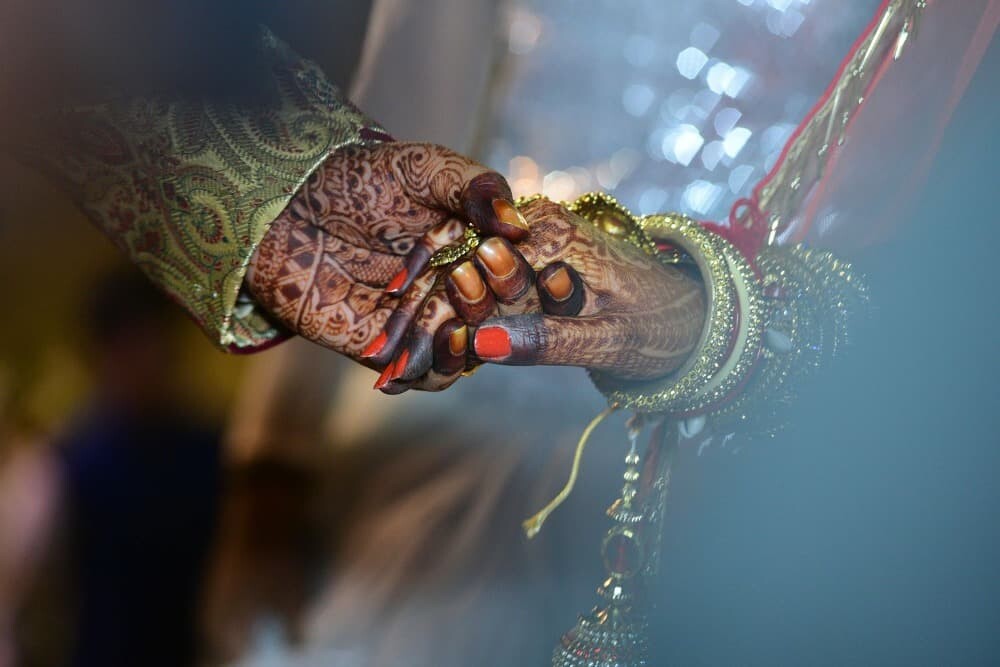We’ve written many blog posts about India because we find it to be a wonderful destination with an incredible cultural richness.
In fact, India remains one of our top destinations for volunteer experiences, with hundreds of participants choosing it each year for their journey.
In India, celebrations are experienced with great emotion, brimming with colors, joy, unity, and plenty of festivity. Weddings are no exception.
Today, we want to share what Indian weddings are like because, during your volunteer experience, you might have the chance to attend one and immerse yourself in this vibrant cultural tradition, often extending over several days.
Indian weddings are known for being vibrant celebrations rich in tradition, often lasting several days. Every detail, from the attire to the ceremonies, holds deep cultural significance.

CELEBRATIONS
Indian weddings usually last three to five days, with different rituals and ceremonies each day. The main events are:
Mehndi (the henna ceremony)
This is one of the most significant and traditional ceremonies. It is generally held one or two days before the main wedding day. It refers both to the ceremony and the art of applying henna on the skin. Henna, obtained from the leaves of the henna plant (Lawsonia inermis), is ground into a powder that is mixed with water, essential oils, and other ingredients to form a paste. This paste is applied to the hands, feet, and other parts of the body in intricate and decorative designs.
It is considered auspicious and is believed to bring good luck, happiness, and prosperity to the bride. It is also said that the application of henna protects against the evil eye and negative energies. The darker the color of the Mehndi on the bride’s hands, the more love she is said to receive from her husband and mother-in-law. This has led to several traditions and games between the bride and her family.
Designs vary but often include motifs like flowers, leaves, geometric figures, and sometimes even the groom’s name hidden within the patterns. Each design has its own symbolic meaning, such as fertility, longevity, and good fortune.
The focus is not only on the bride but is also a community event where women from both families participate. It’s a time of unity and celebration, where women sing traditional songs, dance, and share stories. It is usually held at the bride’s home or a designated venue, which is decorated with flowers, colorful fabrics, and lights.

Sangeet (the music and dance party)
The word “Sangeet” in Hindi literally means “music.” This ceremony is a night dedicated to music, dance, and joy, where families and friends from both sides come together to celebrate the union of the soon-to-be-married couple. It is, above all, a musical party. Traditional, Bollywood, and popular songs are played, while guests perform dance presentations. These performances are usually prepared in advance and can include elaborate choreographies involving friends and family.
One of the fun traditions of Sangeet is the friendly competition between the groom’s and bride’s families. Both sides prepare dances and songs, competing to see who delivers the best performance.
Today, many families choose to organize the Sangeet with specific themes. The venue is usually elaborately decorated with lights, flowers, and colorful fabrics. Some Sangeet celebrations may even have a specific theme like a carnival, a retro party, or a red carpet event. Guests, including the bride and groom, typically wear traditional and festive attire, such as lehengas, saris, kurtas, and sherwanis, but with a more relaxed and comfortable touch compared to the wedding day.
As with any Indian celebration, food plays an important role. A variety of dishes and snacks are offered, often with live food stations. Depending on family customs, alcoholic beverages may or may not be served.
It is a symbolic ritual that represents the joy and union of two families. It’s a moment where wedding planning tensions and worries are set aside, and everyone focuses on celebrating the couple’s love and happiness.
Shaadi (the main wedding)
This is the central and most significant ceremony in a wedding, representing the formal union of the bride and groom in marriage, imbued with ancient rituals and symbolism.
The celebration begins with the Baraat, a festive procession where the groom arrives at the wedding venue riding a horse, elephant, or in a decorated vehicle. He is accompanied by family and friends who dance and play music as they make their way to the wedding venue. Upon arrival, the groom is welcomed by the bride’s family in a ritual known as Milni, where family members exchange flower garlands and embrace as a sign of union.
The formalization takes place under the Mandap, an altar decorated with flowers, fabrics, and other symbolic elements. Only the main participants in the ceremony, including the bride and groom, their parents, and the priest (Pandit), sit under the Mandap.
Next is the Kanyadaan, one of the most emotional rituals of the Shaadi, where the bride’s father formally gives away his daughter to the groom. It symbolizes the transfer of responsibility for caring for the bride from the father to the husband. This is followed by the Saptapadi (The Seven Steps), where the couple takes seven rounds (or steps) around the sacred fire (Agni), which represents purity and the fire deity. Each step symbolizes a promise or vow the couple makes to each other, such as caring for each other, sharing responsibilities, and maintaining fidelity. Upon completing the Saptapadi, the marriage is considered sealed and blessed.
After the seven steps, the groom applies sindoor (red or orange powder) on the top of the bride’s forehead and places the mangalsutra (a symbolic necklace of black beads and gold) around her neck. These gestures symbolize her status as a married woman and blessings for her well-being.
At the end of the Shaadi ceremony, the bride bids farewell to her family in a ritual called Bidaai, leaving her parents’ home to begin her new life with her husband and his family.
CHARACTERISTICS
The bride and groom typically wear traditional attire. The bride usually wears a sari or lehenga in vibrant colors like red, gold, or pink, adorned with detailed embroidery and jewelry. The groom wears a sherwani, a long and elegant outfit, often accompanied by a turban.
Indian weddings are famous for their abundant and diverse food. Traditional regional dishes are served, which may include a wide variety of curries, rice, breads, sweets, and snacks, both vegetarian and non-vegetarian.
Wedding venues are usually adorned with fresh flowers, lights, and bright colors. Colors like red, gold, and orange are common in the decorations, symbolizing prosperity and happiness.
Indian weddings vary according to religion (Hindu, Sikh, Muslim, Christian, etc.) and region of India. Each group has its own unique traditions and rituals.
Experiencing an Indian wedding is sure to be an unforgettable memory. It’s wonderful to see how love and union are celebrated in different parts of the world.
Don’t miss out!




